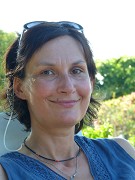

|
Tue22 Jul02:45pm(15 mins)
|
Where:
780/777
Stream:
Presenter:
|

In his book The Total Work of Art in European Modernism (2011), David Roberts argues for a dual lineage of the European total artwork, a "French revolutionary" and a "German aesthetic". Earlier I suggested to add a "Russian spiritual" lineage (Lupishko 2022), because Russia in the large sense of the word -- Russian Empire, "Russia Abroad", and the USSR -- was the third most important country after Germany and France where Richard Wagner’s ideas about the total artwork were taken seriously and implemented systematically. Nowadays, when Russia is bombing the treasure of Soviet Constructivism, the Kharkiv Gosprom (1925-28), the idea of "the Russian Gesamtkunstwerk" as a monolithic national phenomenon has ceased to make any sense.
The part of European history told by Roberts that concerns Russia and the USSR (Diaghilev, Kandinsky, Scriabin, the first Soviet mass festivals, etc.) does not distinguish the complex geography and the complex ethnicity of the representatives of the so-called "Russian" Gesamtkunstwerk. The search for a synthesis of the arts took place with the help of multinational participants in Moscow, St. Petersburg, Kiev, Odessa, Vilnius, Warsaw, Munich and Paris in a form of so-called "creative clusters". In each of these clusters we meet Russian-speaking Ukrainians, Ukrainian-speaking Poles and other representatives of non-Russian ethnical backgrounds. The composer Igor Stravinsky, Ukrainian on his mother side and a descendant of hetmans on his father’s side, the choreographer George Balanchine, a Georgian by birth, brother and sister Vaclav and Boleslava Nijinskys, Poles by birth, the Ukrainian artist Alexandra Exter, who worked in Kiev, Moscow and Paris, and the Lithuanian composer and artist K.M. Ciurlyonis, who worked in Warsaw, Vilnius and St. Petersburg, made important contributions to the understanding of the synthesis of the arts à la russe.
Since 1973, when Andréi Nakov (1941-2022) coined the term "Ukrainian avant-garde", scholars multiplied calls to challenge the mono-national canonical nature of the so-called "Russian" avant-garde by including a "Ukrainian school" in it (V. Marcadé 1990, Makaryk, Tkacz 2015, J.-C. Marcadé 2016, Shkandriy 2019, Lozhkina 2020, Fedorenko 2022). Indeed, there are solid records of a Ukrainian self-identity of such outstanding artists as Kazimir Malevich, David and Vladimir Burliuk, Vladimir Tatlin, Alexandra Exter, Sonia Delaunay, Alexander Archipenko, musicians Igor Stravinsky, Boleslav Yavorsky, Nikolay Roslavets, Thomas von Hartmann, and many others.
In my paper, I will question the "Russianness" of the so-called "Russian" post-Wagnerian Gesamtkunstwerk before and after WWI. Particular attention will be paid to the complex geography of this phenomenon and to the creative clusters Stravinsky-Benois, Hartmann-Kandinsky, Matyushin-Malevich, and Stravinsky-Nijinska.